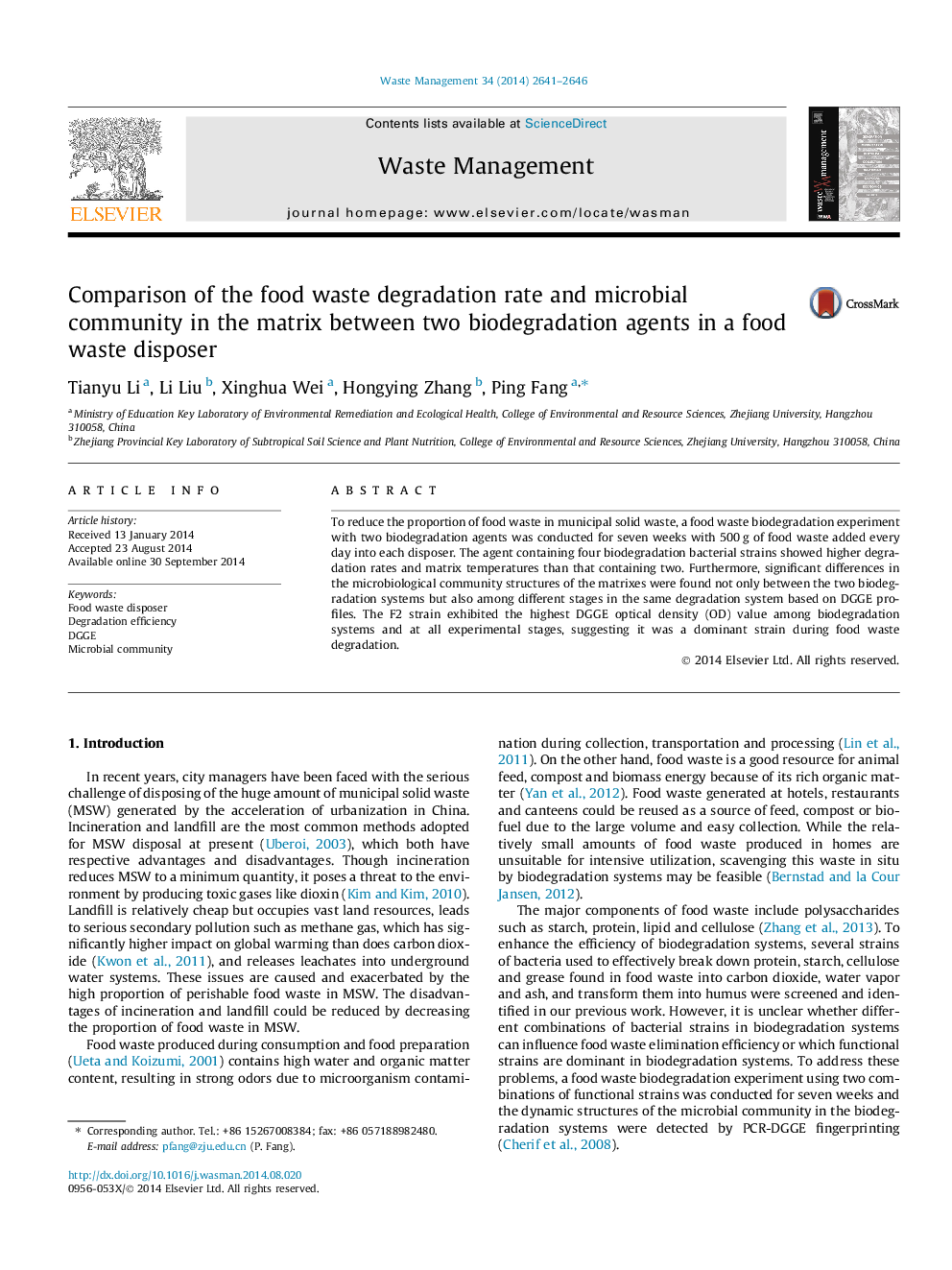| Article ID | Journal | Published Year | Pages | File Type |
|---|---|---|---|---|
| 4471602 | Waste Management | 2014 | 6 Pages |
•We utilized two biodegradation agents to decompose food waste in food waste disposer in situ.•Our work would probably provide a novel method to manage food waste in MSW.•The agent containing four strains showed higher degradation rates and matrix temperatures.•Differences in the community structures of the matrixes were found based on DGGE profiles.
To reduce the proportion of food waste in municipal solid waste, a food waste biodegradation experiment with two biodegradation agents was conducted for seven weeks with 500 g of food waste added every day into each disposer. The agent containing four biodegradation bacterial strains showed higher degradation rates and matrix temperatures than that containing two. Furthermore, significant differences in the microbiological community structures of the matrixes were found not only between the two biodegradation systems but also among different stages in the same degradation system based on DGGE profiles. The F2 strain exhibited the highest DGGE optical density (OD) value among biodegradation systems and at all experimental stages, suggesting it was a dominant strain during food waste degradation.
